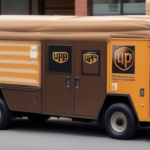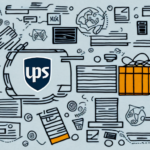Understanding UPS Shipping Label Rates
If you are sending packages through UPS, it is essential to understand how UPS shipping label rates work. Knowing the different factors that can affect these rates could save you money in the long run and help you make smarter shipping decisions.
Why Understanding Shipping Label Rates is Important
Shipping label rates vary depending on the shipping method, package size, and destination. Understanding these rates and how they are calculated can help you budget your shipping expenses and make the best choices when it comes to shipping your packages.
Additionally, understanding shipping label rates can help you avoid unexpected fees and charges. Some shipping carriers may charge extra fees for certain package sizes or destinations. Being aware of these fees can help you avoid surprises when it comes to your shipping costs. By taking the time to understand shipping label rates, you can make informed decisions about your shipping needs and ensure that you are getting the best value for your money.
What are UPS Shipping Labels
A UPS shipping label contains important information about the package being shipped, such as the sender and receiver's address, package weight, and shipping method. This label serves as a way to track and identify your package throughout the shipping process.
UPS shipping labels are typically generated online through the UPS website or through third-party shipping software. Once the label is printed and attached to the package, it can be dropped off at a UPS location or picked up by a UPS driver for delivery.
It is crucial to ensure that all information on the shipping label is accurate and up-to-date to avoid delays or issues with delivery. Additionally, UPS offers various options for shipping labels, such as printing multiple labels at once or using a thermal printer for faster and more efficient label printing.
Types of UPS Shipping Labels
There are various types of UPS shipping labels, including:
- Ground Shipping Labels: Designed for shipments that do not require expedited delivery and can be transported by ground transportation. This is typically the most cost-effective option for shipping within the same country.
- Air Shipping Labels: Used for shipments that require faster delivery times, such as overnight or express shipping. While more expensive than ground shipping labels, they offer quicker delivery times.
- International Shipping Labels: Tailored for shipments that cross international borders, including necessary customs documentation and compliance with international shipping regulations.
Each type of label comes with different pricing structures, allowing you to choose based on your specific shipping needs.
How to Create a UPS Shipping Label
Creating a UPS shipping label is straightforward and can be done in a few simple steps:
- Prepare Your Package: Ensure you have the correct packaging for your items and measure the package dimensions.
- Access the UPS Website: Log onto the UPS website and select the shipping option that best suits your needs.
- Fill Out the Shipping Label: Enter all the necessary information, including sender and receiver details, package weight, and shipping method.
- Print the Label: Print the label and attach it securely to your package.
- Ship Your Package: Drop off the package at a UPS location or arrange for a UPS driver to pick it up.
Ensure all information is accurate, including the recipient's name and address, as well as your return address. For international shipments, include any additional documentation such as customs forms to avoid delays.
The Elements of a UPS Shipping Label
A UPS shipping label includes several key elements:
- Sender and Receiver Information: Names and addresses of both the sender and the recipient.
- Package Details: Weight, dimensions, and type of package.
- Shipping Method: Specifies the chosen shipping option (e.g., Ground, Priority, Express).
- Tracking Number: A unique number that allows you to track the package throughout the shipping process.
- Additional Services: Any extra services requested, such as insurance or signature confirmation.
UPS also provides tracking information on their shipping labels, allowing both the sender and receiver to monitor the package's progress and estimated delivery date. Additionally, UPS offers the option to include a return label, facilitating easier returns if necessary.
Why UPS Shipping Label Rates Vary
The rates for UPS shipping labels can vary based on several factors:
- Package Size and Weight: Larger and heavier packages generally cost more to ship.
- Shipping Method: Expedited shipping options like overnight delivery are more expensive than standard ground shipping.
- Destination: Shipping internationally or to remote areas can incur higher rates.
- Additional Services: Services such as insurance, signature confirmation, or special handling can increase costs.
- Seasonal Demand: During peak times like the holiday season, shipping rates may increase due to higher demand.
- Fuel Prices: Fluctuations in fuel costs can lead UPS to adjust shipping rates accordingly.
Considering these factors can help you better plan your shipping strategy and manage costs effectively.
How to Calculate UPS Shipping Label Rates
Calculating UPS shipping label rates can be done using the UPS shipping calculator tool available on their website. Follow these steps:
- Navigate to the UPS shipping calculator.
- Enter the package weight and dimensions.
- Select the shipping method that best fits your needs.
- Input the destination address.
- Review the estimated shipping rates.
Keep in mind that the estimated rate provided by the calculator may not include additional fees such as fuel surcharges or residential delivery fees. For a more accurate quote, review the UPS website details or contact UPS customer service.
Additionally, the type of packaging used can impact the rate. Using UPS-branded packaging may result in lower shipping rates, as the dimensions and weight are pre-determined. Ensure that the packaging is suitable for the contents to prevent damage during transit.
Factors Affecting UPS Shipping Label Rates
Several factors can influence the final rate of your UPS shipping label:
- Distance: Longer distances typically result in higher shipping costs.
- Shipping Speed: Faster delivery options cost more than standard shipping.
- Package Size and Weight: Heavier and larger packages incur higher rates.
- Additional Services: Services like insurance, signature confirmation, and special handling add to the cost.
- Type of Item: Items requiring special handling, such as fragile or hazardous materials, may increase shipping rates.
- Seasonal Demand: High-demand periods like holidays can lead to increased rates and limited availability.
Considering these factors when choosing a shipping method and packaging can help manage and reduce your shipping costs.
Tips to Save Money on UPS Shipping Labels
Here are several strategies to save money on UPS shipping labels:
- Choose a Lower Shipping Speed: Opting for standard ground shipping instead of expedited options can significantly reduce costs.
- Select Appropriate Packaging: Use the smallest possible packaging that safely accommodates your items to minimize size and weight.
- Leverage UPS Discounts: Sign up for UPS loyalty programs or business accounts to take advantage of discounted rates.
- Compare with Other Carriers: Evaluate rates from other shipping carriers to ensure you are getting the best deal for your specific needs.
- Consolidate Shipments: Group multiple packages into a single shipment when possible to benefit from bulk shipping discounts.
Researching available options and comparing prices can help you secure the best rates for your UPS shipping needs, ensuring cost-effectiveness without compromising on service quality.
Common Mistakes to Avoid When Using UPS Shipping Labels
To ensure smooth shipping experiences, avoid the following common mistakes when using UPS shipping labels:
- Incorrect Package Dimensions: Providing inaccurate dimensions can lead to unexpected costs or delivery delays.
- Choosing the Wrong Shipping Method: Selecting an inappropriate shipping option can result in higher costs or extended delivery times.
- Poor Labeling: Not properly labeling the package can cause confusion, misrouting, or delays in delivery.
- Improper Packaging: Using weak or unsuitable packaging materials can lead to damage or loss during transit.
- Neglecting to Secure the Package: Failing to secure the package properly may result in it opening or breaking during shipping.
By avoiding these mistakes, you can minimize additional fees and ensure that your packages arrive safely and on time.
Tracking Your Shipment with the UPS Tracking Number
UPS provides a tracking number with every shipping label, allowing you to monitor your package throughout the shipping process. You can track your package by:
- Visiting the UPS tracking page.
- Entering your tracking number into the designated field.
- Reviewing the current status and estimated delivery time of your shipment.
While tracking information offers valuable insights, it is important to note that it provides an estimate and may not always be entirely accurate due to factors such as weather conditions, customs delays, or other unforeseen circumstances.
If you have concerns about the status of your shipment, contact UPS customer service for assistance. They can provide additional information and help resolve any issues that may arise during the shipping process.
Troubleshooting Issues with Your UPS Shipment
If you encounter any issues with your UPS shipment, such as a lost or damaged package, it is crucial to contact UPS customer service promptly. They can assist in resolving the issue and ensuring your package is delivered successfully.
Regularly tracking your package helps ensure it is on schedule for delivery. If you are expecting a package but are unavailable to receive it, you can request UPS to hold the package at a nearby location for convenient pickup.
Taking proactive steps and utilizing UPS support services can help address and resolve any shipping issues efficiently.
Best Practices for Using UPS Shipping Labels
Adhering to best practices when using UPS shipping labels can enhance the efficiency and reliability of your shipments:
- Proper Packaging: Use sturdy packaging materials that protect the contents and prevent damage during transit.
- Accurate Labeling: Ensure all necessary information is correctly entered on the shipping label, including addresses and package details.
- Choose the Correct Shipping Method: Select a shipping option that aligns with your delivery timeframe and budget.
- Track Your Package: Utilize the tracking number to monitor your shipment's progress and stay informed about its status.
- Keep Records: Retain copies of shipping labels and tracking information for your records in case any issues arise.
Implementing these best practices ensures that your packages are delivered safely, on time, and without unnecessary complications.
Additional Resources
For more detailed information and the latest updates on UPS shipping, consider consulting the following reputable sources:
Conclusion
Understanding UPS shipping label rates and the various factors that influence them is crucial for efficient and cost-effective shipping. By familiarizing yourself with the types of shipping labels, how to create and use them correctly, and implementing best practices, you can optimize your shipping process, reduce costs, and ensure timely delivery of your packages.
Stay informed about the latest UPS shipping options and tools by visiting the ShipScience UPS Resources and other authoritative industry sources.




















